The Meditative, Mindful Practice of Birding
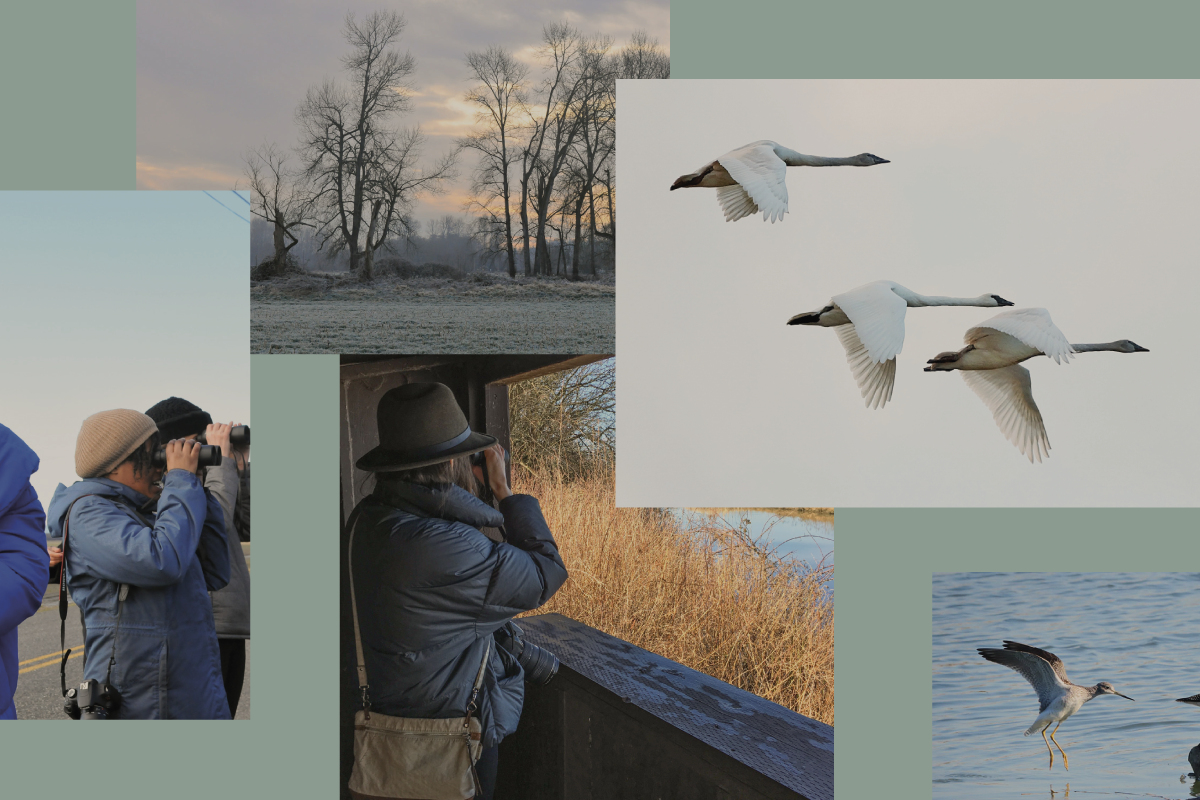
The Meditative, Mindful Practice of Birding
Tips on how to bird watch, and praise for what the peaceful pastime can offer (purposeful awareness, for one) — from the Angell Sisters’ Annual All-Ladies Birding Tailgate in Skagit, Washington.
By Bryony Angell
The frozen farmlands north of Seattle are covered in white every winter, and I’m not talking snow. I’m talking birds, thousands and thousands of them.
Instead of quiet snowfall, imagine the clamor of more snow geese that you believed possible, flying in formation overhead against a clear blue sky. They settle on fields full of grain planted for their winter feeding, and appear as a massive white dusting on the flat, farmland landscape of the Skagit River Delta.
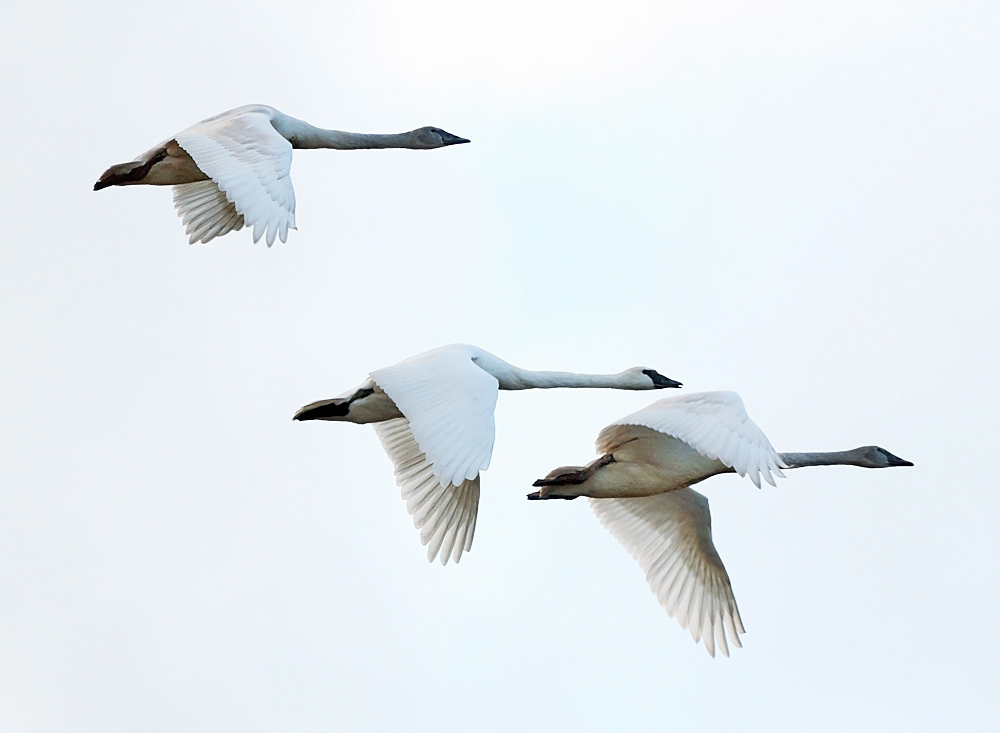
Trumpeter swans — photo by Mike Hamilton
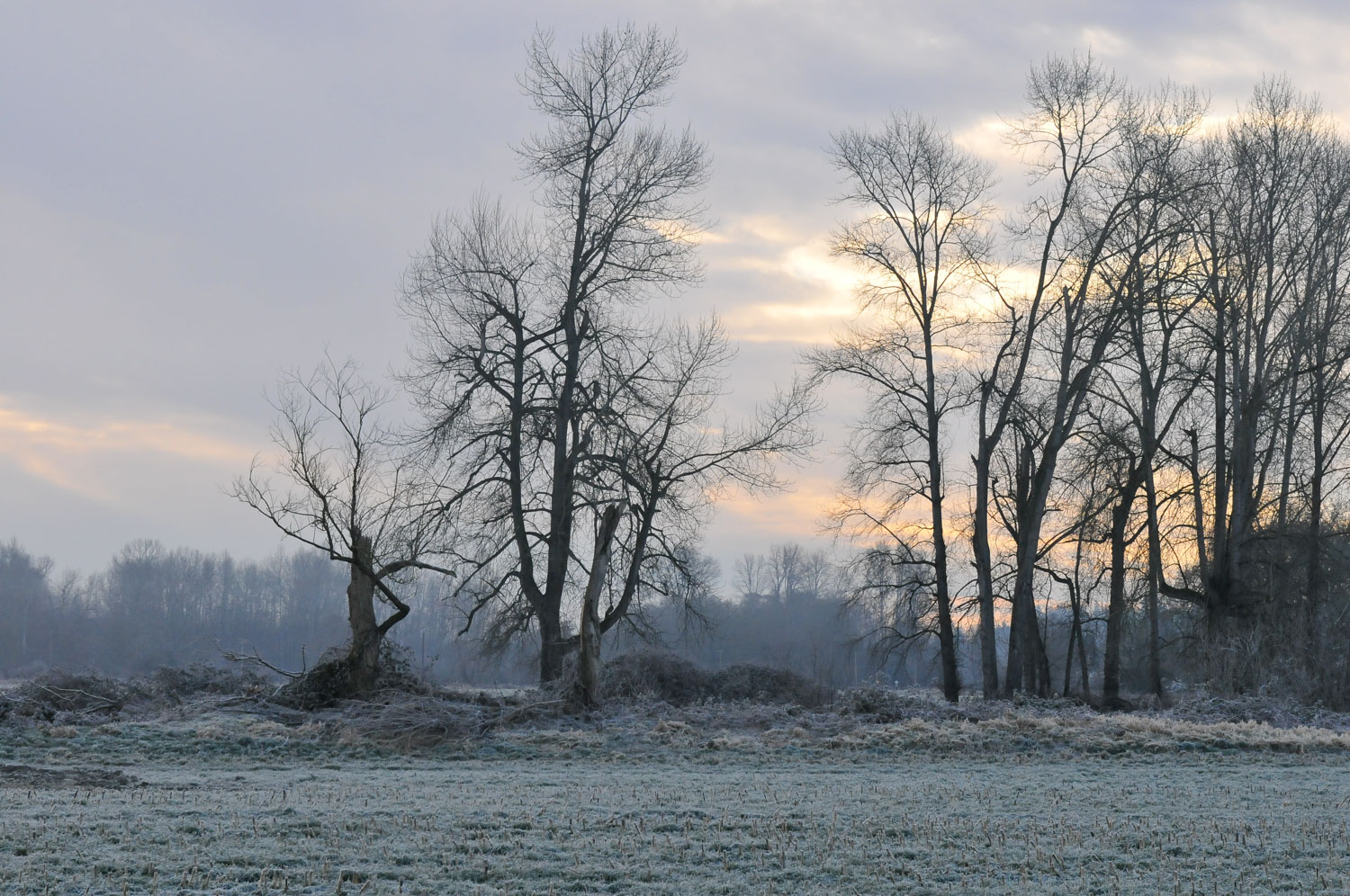
Frozen farmland — photo by Gilia Angell
The All-Ladies Birding Tailgate
Sharing in this spectacle of bird migration (swans, ducks, owls, hawks and shorebirds) this early March morning are ten women—myself as the leader for the day, along with my twin sister Gilia. She and I have made this pilgrimage every year since early childhood, when we birded with our parents.
For the last four years we’ve taken various girlfriends on what is now an annual all-ladies birding tailgate to see these feathered visitors from both the Arctic and the Southern Hemisphere. Our group this year includes a wardrobe stylist, two naturalists, a caterer and a UX designer, ranging in age from 28 to 60. Not all of us are experienced birders, but we all love wild birds.
We like food and wine, too. Our car trunks are stuffed with provisions for a lavish picnic later as part of our day. We grasp thermoses of hot coffee as we convene at 7am in a suburban parking lot to consolidate into two cars and hit the road.
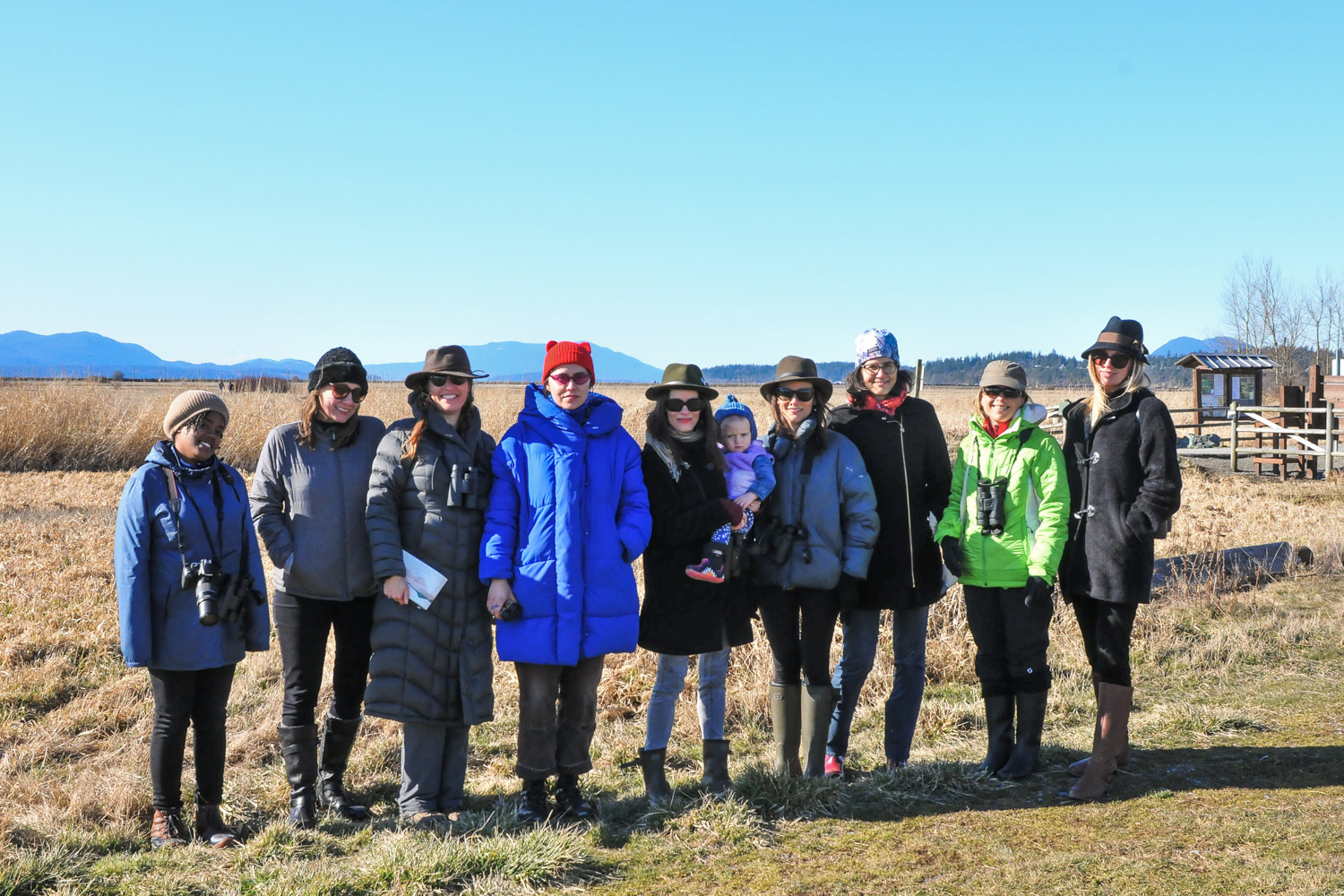
The Group — photo by Gilia Angell
“Today is gonna be lit,” says friend Tiffany, originally from New York City and more used to urban birding. Indeed, the day lights up right away. Barely 30 minutes in we’ve already seen 10 species from our car, en route. As we’re refueling at a coffee shop at the edge of the Delta, we see those snow geese overhead, as steady and dramatic as a formation of planes.
Birding—or bird watching—is a fast-growing pastime among Americans, especially women
The latest data provided by US Fish and Wildlife Service shows that women make up a majority of birders nation-wide at 56 percent. That’s watching birds, whether it be at your window feeder or making a trek to see birds in situ. Birding is a practice you can do wherever you live, and wherever you are.
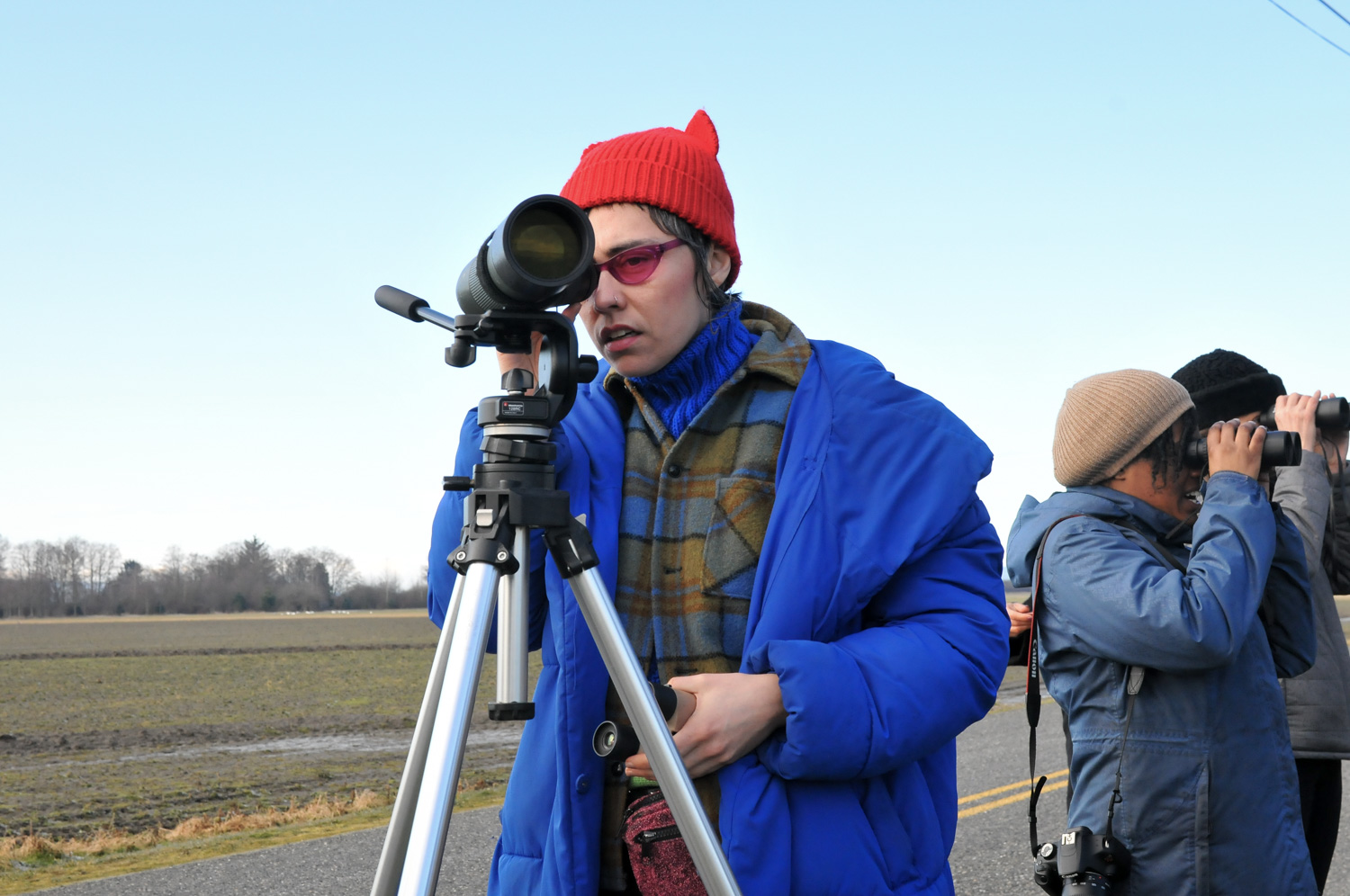
Meg looking through scope — photo by Gilia Angell
Birding is a practice you can do wherever you live, and wherever you are.
And it’s getting more mainstream, as in, nerdy-as-cool. The New York Times recently featured a decidedly non-stereotype group of young urban birders of wide demographic, including Feminist Bird Club founder, Molly Adams. Younger birders are embracing the social potential of birding, forming clubs outside the main birding conservation organizations and redefining who the “typical birder” is. Historically, that “typical birder” has been an urban white woman over 50.
Those days are changing (though soon I will be a white woman over 50—I’m 45!). My ambition as a birder and writer is to introduce this practice to a broader group of women.
Birding is a practice that encompasses so much potential
It can be solitary or social, competitive or relaxed, academic or casual. While birding you use all your senses, and once trained to hear birdsong through the din of urban noise, you can never unhear birdsong! Birding can be a meditative, mindful practice, a purposeful awareness of sounds and movement outside yourself.

photo by Bryony Angell
And once attuned to birds, my hope is that new birders will care enough to keep those birds around. Bird conservation is the ultimate endgame for me as a birding enthusiast. When you consider that one third of all North American bird species are in urgent need for conservation action, you see how your birding efforts can send a positive message for protection.
Birding can be a meditative, mindful practice, a purposeful awareness of sounds and movement outside yourself.
Today’s tailgate is a celebratory affair. We are excitedly “spotting” (looking for birds) from the word Go. Our goal is to count species and numbers of birds that we can identify. Some of us have field guides; others are using bird identification apps on our phones (I like the David Sibley one). From the front passenger seat, I keep tally of our day’s count. We compare notes between cars and count everything seen by at least two of our party while en route as well as at our various birding destinations.
We see Red-tailed Hawks sitting on light posts along the highway; a pair of Bald Eagles perched in a tree as we exit into farmland. Soon we are seeing over a dozen species in a single location as we stand on a dike at Wiley Slough on Fir Island: A Northern Shrike, Red-winged Blackbirds, a Pied-billed Grebe, and over 30 Greater Yellowlegs.
Bird conservation is the ultimate endgame for me as a birding enthusiast.
Our friend Jackie, a novice birder, downloads the citizen science bird reporting database eBird to her phone and starts reporting in real time. She is astonished at the sites listed and species boxes available for her to check, so she doesnt have to blindly guess what she may have seen. “It makes me feel like an official birder! Squeal!” she squeals.
- photo by Bryony Angell
- Greater Yellowlegs — photo by Mike Hamilton
Collective knowledge and curiosity
How do we know what we are seeing? How do we know where to look? Our group is using collective knowledge, our eyes, ears and curiosity to observe our surroundings, together. We welcome the speculation of the novice birders, and pace ourselves for a day that allows for getting to know each other as well as the birds.
The wild birds provide the starting point beyond our observation of them: birding is community, action, meditation, experience of place and the potential for deep learning.
We raise a glass at lunchtime to cheer our sorority and birds seen so far. Our day ends at 5pm back at the suburban parking lot with new friendships, hugs, and a conviction to get out birding more! The wild birds provide the starting point beyond our observation of them: birding is community, action, meditation, experience of place and the potential for deep learning.
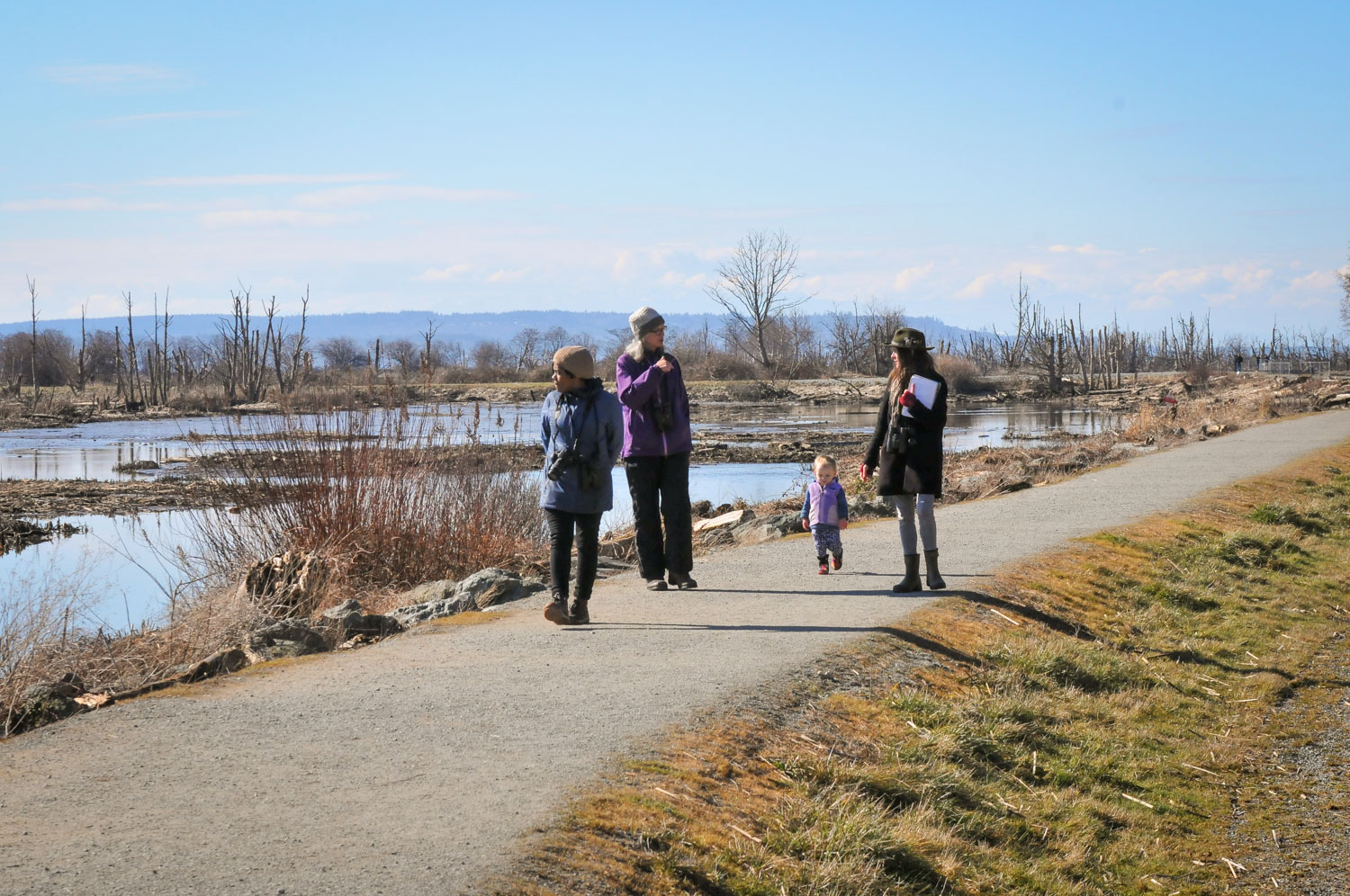
Strolling dike at Wiley Slough — photo by Gilia Angell
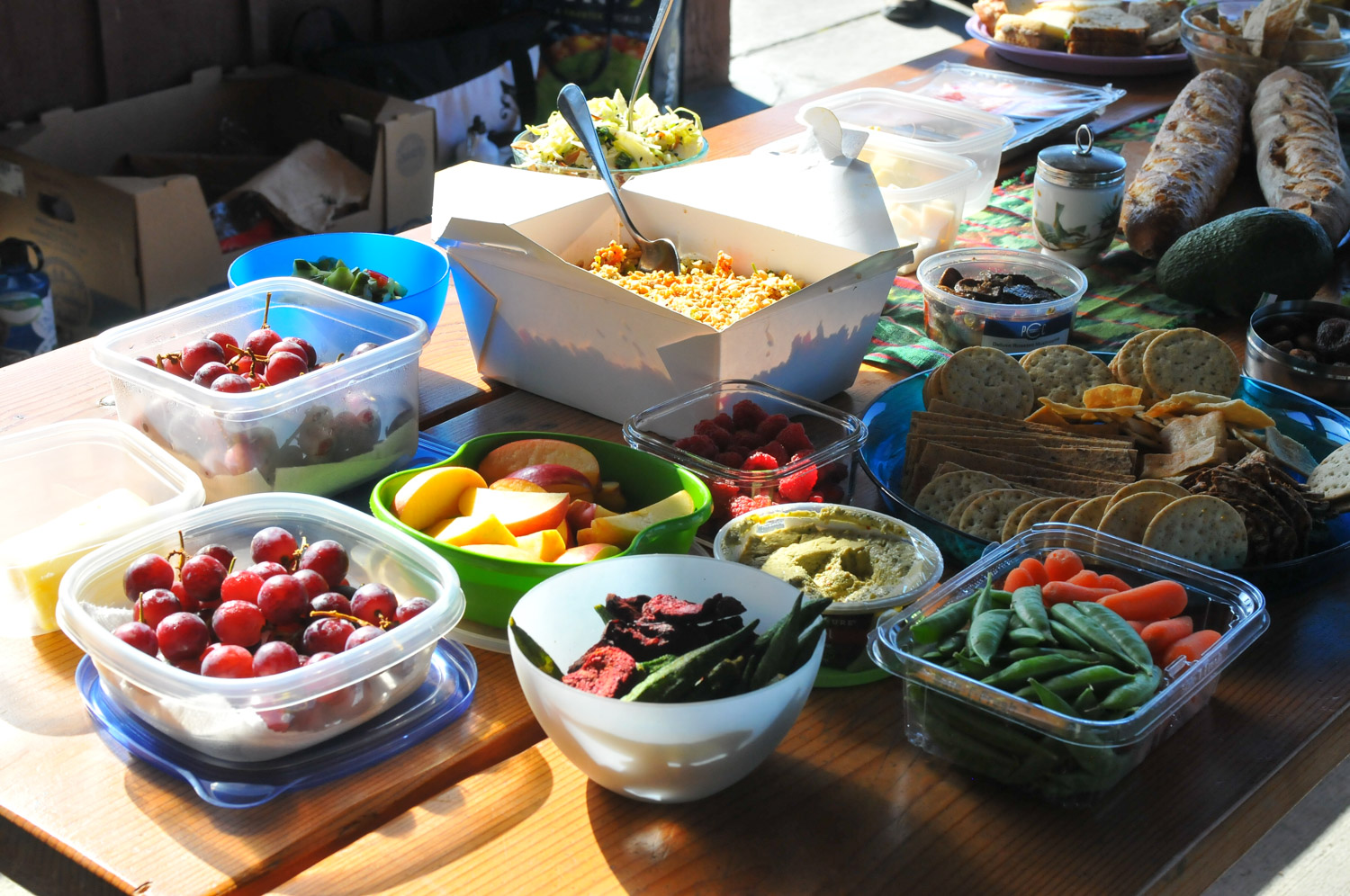
Lunch table — photo by Gilia Angell
Still feeling shy, or not totally convinced? For the more gung-ho outdoor explorers among you, birding is possible while running or surfing. I’ve even birded while snowshoeing at 3K feet. Birding can be your own practice, however you want to approach it.
There are several ways a new birder can gain confidence her first few times out:
- Find a meet up or join a bird walk through your local Audubon or parks department. Joining a birder-led walk is the best way to start and improve your birding skills by learning from those with more knowledge. I honed my birding skills from years of such walks with more skilled birders.
- If you want to go it alone, download a Birding trail map from the American Birding Association (ABA) website. The ABA lists birding hot spots in every state, along what you may see there and what times of year are best for birding. The ABA has also published field guides for some states, such as this one for my home state of Washington.
- Read and follow the ABA’s birding code of conduct. The code is instructive for what you might encounter in the way of bird (and human!) behavior, and you’ll learn how to comport yourself correctly from the start.
- Borrow or invest in a pair of binoculars. Download a bird identification app for your phone or purchase a field guide local to your area. Having these two tools will enhance your experience 100 percent.
- Spend money locally and tell local business and people you meet that you are there birding. You may gain some inside scoop on what someone has seen, and at the very least you are supporting the birding economy.
Bryony Angell writes and birds from western Washington state. Birding culture is her beat; read more of her work at bryonyangell.com.


Be the first to comment